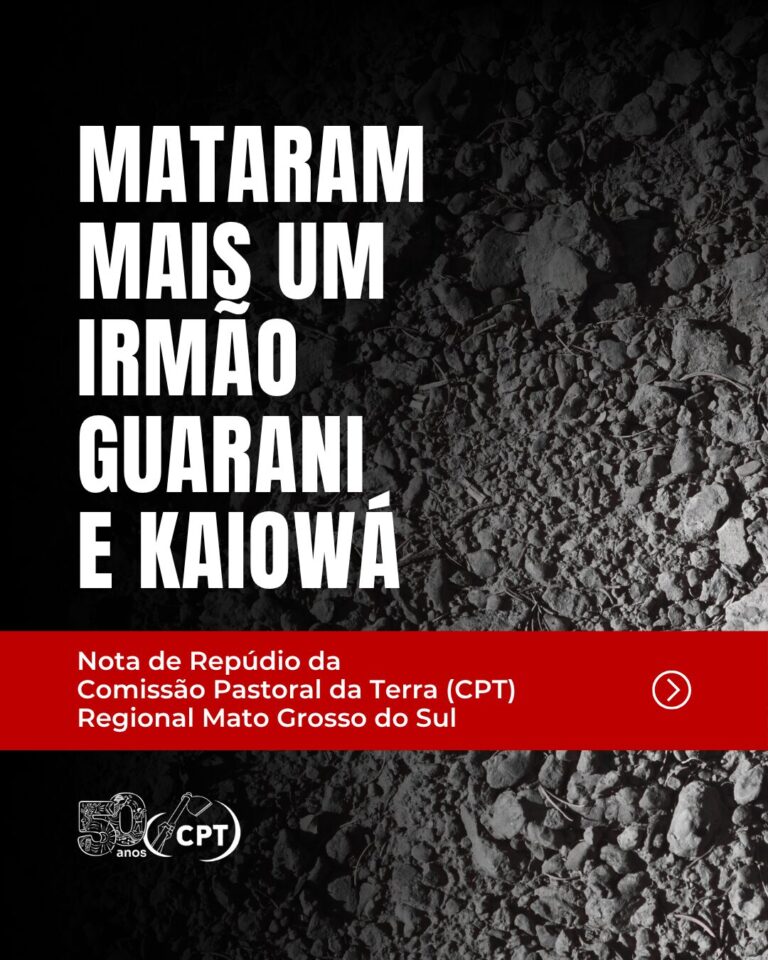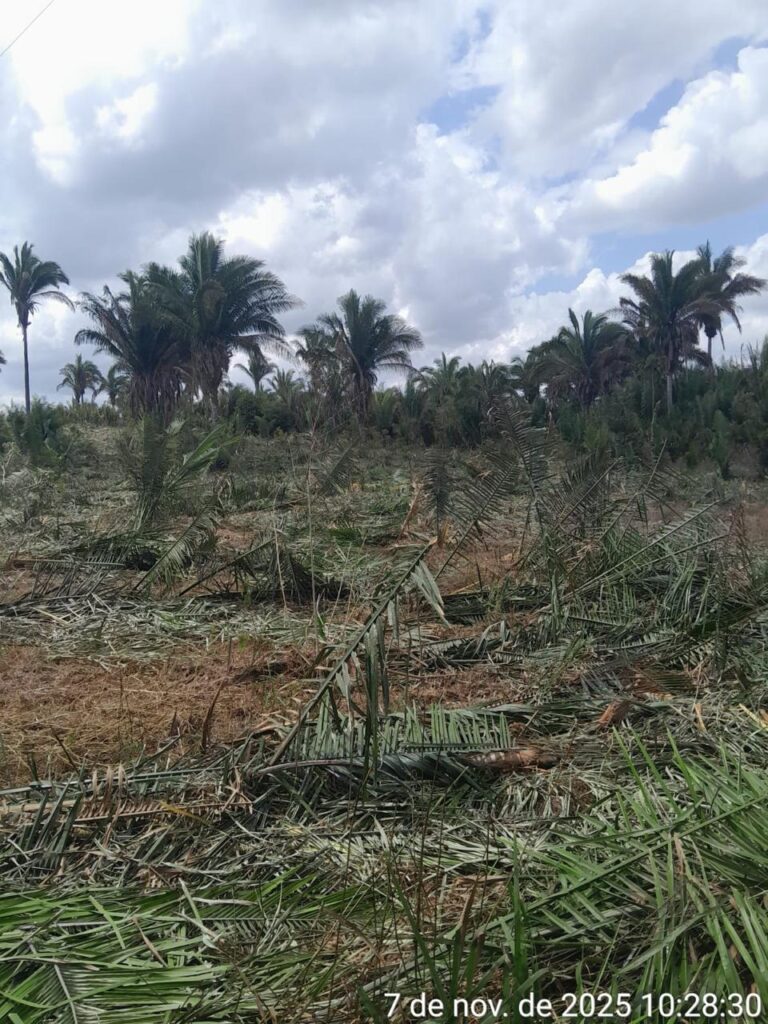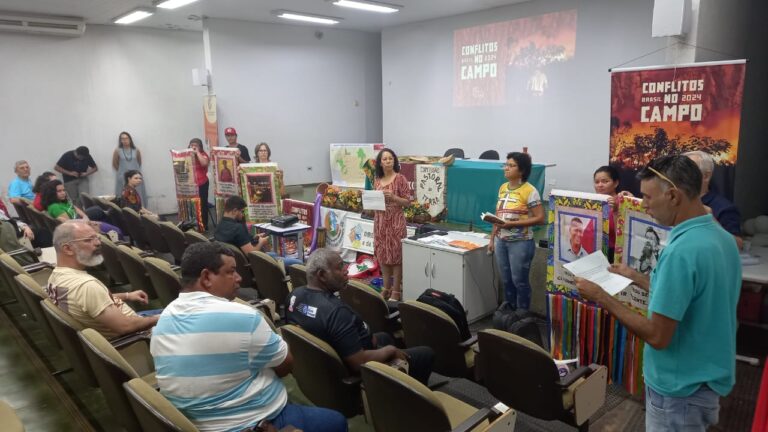CPT partial data: Violence against occupation and land tenure, murders of landless people and deaths as a result of conflicts soar in 2021
The data referring to “Violence against Land Occupation and Land Tenure” show us that the “Destruction of Home”, “Destruction of Belongings”, “Expulsion”, “Land grabbing”, “gunslinger action” and “Impediment of access to the Communal Use Area” reached a number of families, affected until 31st of August 2021, higher than that verified for the whole year of 2020.
418 territories in the country were targeted by this type of violence in the first 8 months of 2021. 28% of them are indigenous territories. Between January and November 2021, 26 murders were recorded in conflicts in rural areas. A 30% increase over the entire previous year, when 20 murders [1] were registered.
The number of “landless people murdered” rose from 2 in 2020, to 6, in 2021. “Deaths as a result of conflicts” soared, reaching an increase of 1,044%, from 09, in the entire year of 2020, to 103, until then registered. Of these 103 deaths, 101 were Yanomami indigenous people.
The Documentation Center of the Comissão Pastoral da Terra (CPT) – Dom Tomás Balduino (Cedoc-CPT) presents, on this Human Rights Day (10), the Partial Data of Conflicts in rural areas, in Brazil, for the period from January 1st to August 31, 2021. With the exception of the categories of “murders” and “deaths as a result of conflict”, referring to “violence against the person”, which are updated to date.
In 2021, according to partial data, there was an increase in the number of families involved in Land Conflicts by 3.55%, although there was a decrease in the number of conflicts of this type. Resistance actions carried out by peoples, traditional communities and social movements rose again after the decline of the first year of the pandemic. The camps went from 2, between the months of January and August 2020, to 3, in the same period of 2021, with a 291% increase in the number of families involved. The number of families in occupation and repossession of land registered in 2021, had an increase of 558.57%, from 519 to 3,418, which already corresponds to more than double the total number of families registered in the whole year of 2020 (1,391). This shows that even with the fear of contamination by Covid-19, these families had to resist to stay alive and in their traditional territories. The offensive against people in rural areas, waters and forests has not been quarantined.
In 2021, 418 territories suffered “Violence against Land Occupation and Land Tenure”. Of these, 28% are indigenous territories; 23% quilombolas; 14% are squatters’ territories; 13% are landless territories, among others. “Home destruction” increased by 94%, “destruction of belongings” 104%, “expulsion” 153%, “land grabbing” 113%, “gunslinger action” 118% and “Impediment of access to the Communal Use Area” increased by 1,057%. All these data, registered between January and August of this year, already surpass the data for the whole year of 2020.
Among the categories that most caused “Violence against Land Occupation and Land Tenure”: Farmer (23%), Entrepreneur (18%), Federal Government (14%), Land Grabber (13%). The “Mine Workers” category went from 3% in 2020 to 6% in 2021. The jump in this category was also registered in “Conflicts over Water”, having gone from less than 1% in 2020 to 5% in 2021.

Violence against the Person: the murder of landless people triples and deaths as a result of conflicts soar
In 2021, 26 murders related to conflicts in rural areas have been registered so far. Compared to the whole year of 2020, it already represents a 30% increase in murders in rural areas in Brazil.

Of the 26 murder victims, 8 were indigenous, 6 landless, 3 squatters, 3 quilombolas, 2 settlers, 2 small landowners and 2 babassu coconut breakers. In relation to 2020, the number of murdered indigenous and quilombolas remained the same. The number regarding the landless people tripled, from 2, in 2020, to 6, in 2021. All quilombolas murdered in 2021 (3) were from Maranhão, the brazilian state with the highest number of murders in the year (9), around one third of the total registered so far.
All 6 murdered landless workers were killed in the Amazon Forest, of which 5 were killed in Rondônia. All members of the Liga dos Camponeses Pobres (LCP). 3 of them were killed in a massacre on August 13 [2], by the Special Operations Battalion (BOPE) of the Rondônia Military Police and by the National Security Force, at Ademar Ferreira Camp, in Nova Mutum, Porto Velho district. This was the only massacre recorded by the CPT so far, in 2021. The conflict in the region remains very tense [3]. The number of murdered squatters increased from 1 in 2020 to 3 in 2021, and of settlers from 1 in 2020 to 2 in 2021.
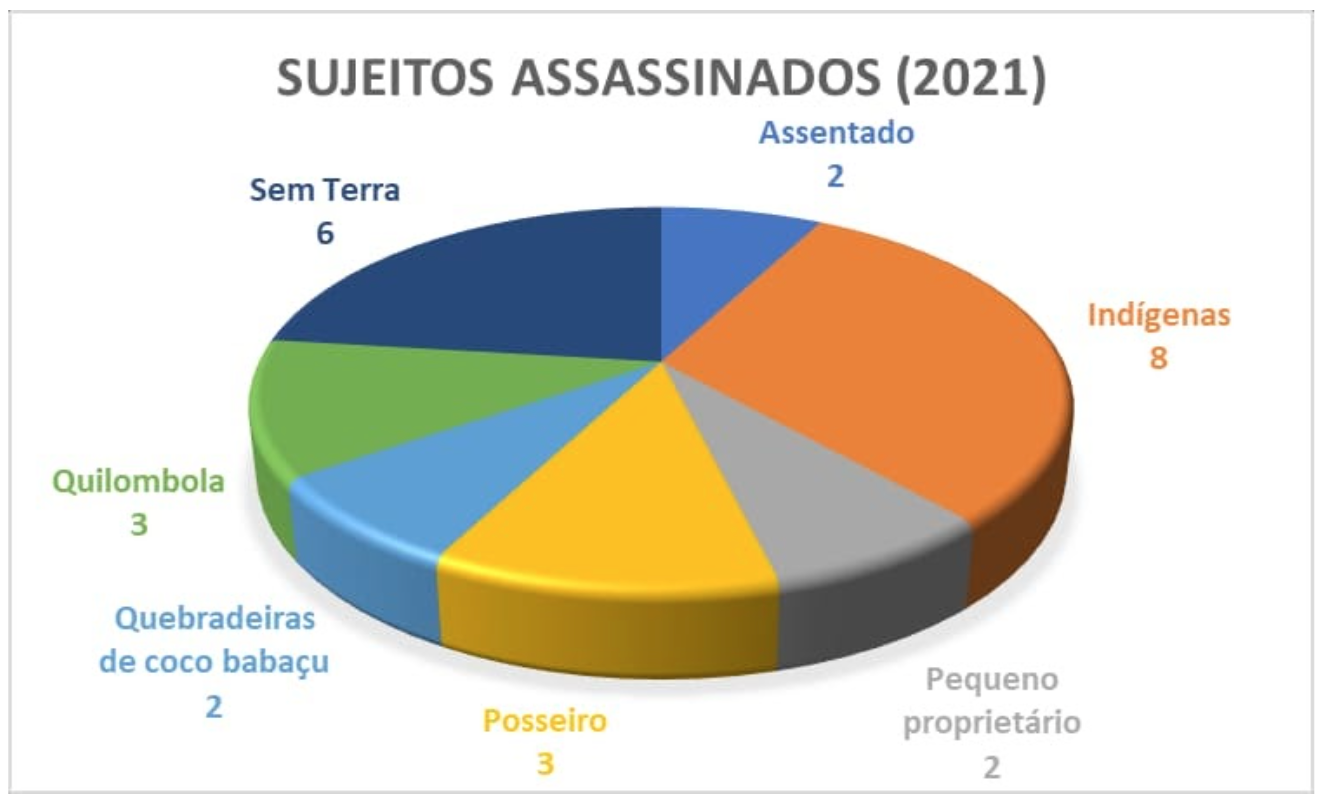
In addition, there was a 50% increase in assaults, 200% in threats of arrest, 1,100% in humiliation, 14% in intimidation and 1,044% in deaths as a result of conflicts.
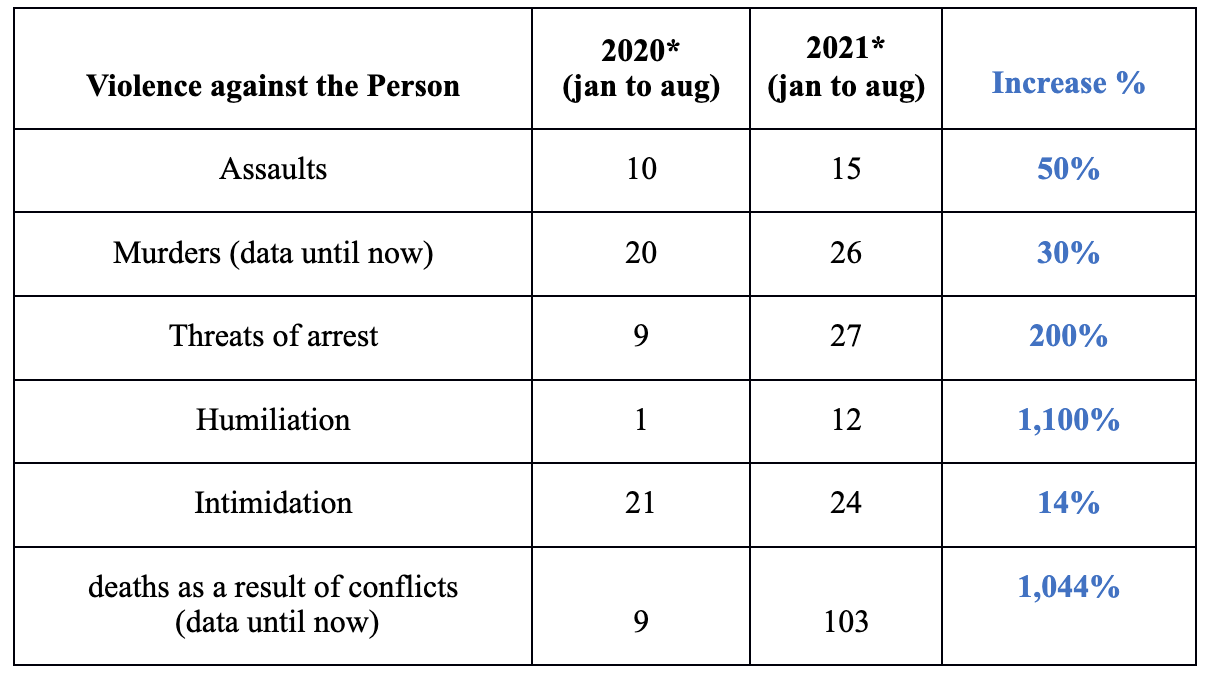
Of the 103 deaths as a result of conflicts recorded so far in 2021, 101 were Yanomami indigenous people. From this, it is not possible to extract, according to the sources, the exact number of children, women and men who died as a result of conflicts in rural areas. This is due to the fact that the research source did not provide such specified information. But, of the 101 deaths, we have information that at least 45 were children. Most of this data was presented at the II Forum of Yanomami and Ye’Kwuana Leadership, held between 4 and 7 September 2021, in the region of Tabalascada, municipality of Cantá, in the north of the state of Roraima. There is even great difficulty in establishing the exact dates of the occurrence of these deaths.
During 2021, we monitored several invasions by mine workers into Yanomami territory, resulting in murders, aggressions, threats, threats to the territory, water contamination, deforestation, in addition to being vectors of various diseases, including Covid-19. We also witnessed children being sucked by dredges [4] as well as children dying to drown in an attempt to escape the shots fired by criminals [5]. The lack of public health and nutrition policies exposed the high rate of malnutrition that affects Yanomami children, often fatally, and also exposed how diseases, such as malaria, leishmaniasis and pneumonia, also decimate these indigenous people in our country.
Manifestations and Solidarity Actions
In the first eight months of 2020, 768 Demonstrations of Struggle were registered, involving 365,526 people. In the same period in 2021, there were 1,278 Demonstrations of Struggle, with the presence of 360,781 people. Comparing the two years, there is an increase of 66.40% in the number of Demonstrations of Struggle and a reduction of 1.29% in the number of people present in such demonstrations. It can be inferred that the increase in Demonstrations of Struggle happened mainly due to the participation of rural, forest and water populations in the pro-vaccination acts and against the Bolsonaro government, and also due to the solidarity actions carried out mainly by the settled families and encampments, which donated food to the urban population.The reduction in the number of people is justified by the fact that much of the information contained in the sources does not include this number, which makes it impossible to accurately record the participants in the demonstrations. In 2020, we had, throughout the year, a total of 1,348 Demonstrations of Struggle with the participation of 408,176 people.
Solidarity Actions represented 382 “Demonstrations of Struggle”, which corresponds to 29.89% of the total of Demonstrations of Struggle held in 2021. Paraná was the state in which the most solidarity actions took place (91), followed by Pernambuco (55) , Alagoas (33), São Paulo (27), among others.
The Demonstrations of Struggle that addressed the Indigenous Issue had an increase of 146% compared to 2020. From January to August 2020, 46 demonstrations were registered, whereas, in the same period of 2021, 113 Demonstrations of Struggle were registered under this theme. Here we highlight the “Acampamento Terra Livre”, the “Levante pela Terra” and the “Acampamento Luta pela Vida”, all held in Brasília by indigenous peoples. The camps also had national adhesion, with demonstrations and acts carried out in indigenous territories. Resistance to the judgment of the “Temporal Mark” was the main agenda for the actions of the indigenous peoples. The approval of the thesis would disrespect the fundamental right of indigenous peoples, which is materialized in the original right over the lands they traditionally occupy.
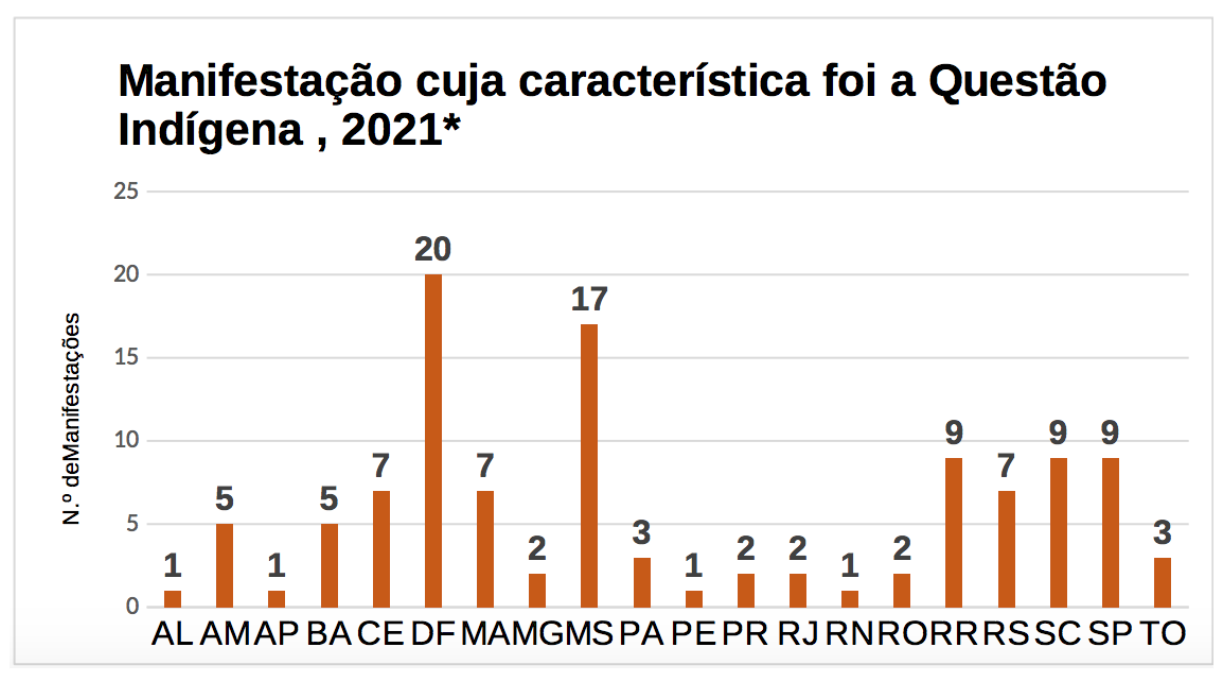
Legal Amazon
Indigenous people continue to be the most numerous victims of Land Conflicts in the Legal Amazon. However, the data fluctuated from 42% of victims in 2020, to 33% in 2021. Similarly, quilombolas went from 24% in 2020 to 19% in 2021. On the other hand, in the region, there was an increase in violence against squatters, landless workers and settlers. In 2020, 13% of victims of violence in conflicts over land were squatters, 10% landless workers and 4% settlers. In 2021, the numbers registered 19.5% of squatters, 12% of landless workers and 7% settlers. In this year, farmers (30%) and land grabbers (14%) are the main agents responsible for this violence in the Legal Amazon.
Of the 26 murders recorded in 2021, 20 took place in the Legal Amazon. 77% of the total. Regarding violence against occupation and land tenure in the region, the numbers are alarming. 93% of the total number of families who were victims of land grabbing from January to August 2021 were in the Legal Amazon. Furthermore, even with a slight reduction of 3% in data referring to illegal deforestation, the region still accounts for 92% of the families impacted by this type of crime. 91% of the total number of families that had their territories invaded were in the Amazon, as well as 80% of families prevented from accessing areas of communal use and 78% of families who were victims of gunslinger action. Families victims of pesticide contamination in the Amazon, even with a reduction of 11% compared to the previous year, still account for 80% of the total number of victims of this type of crime in Brazil.
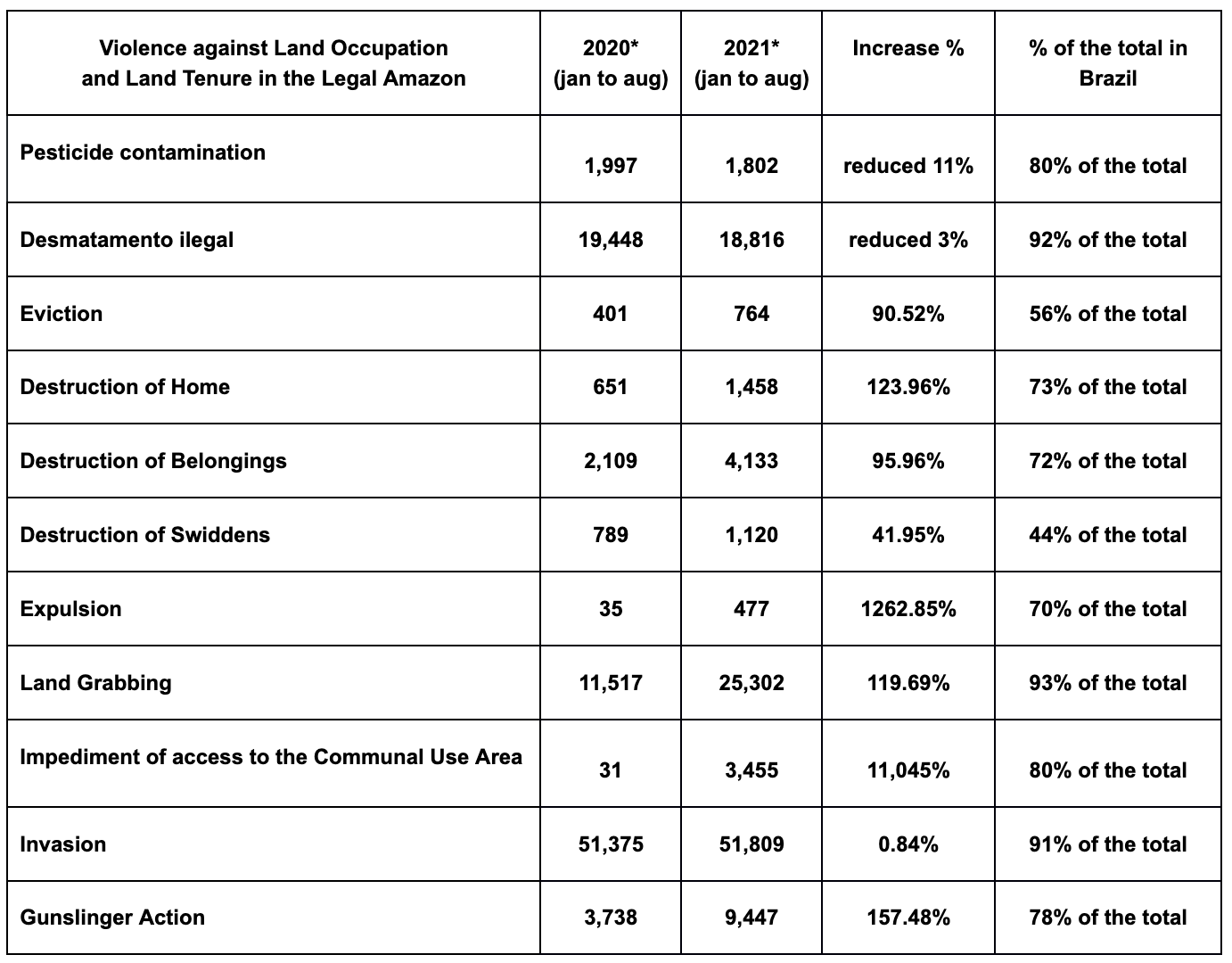
[1] In the publication “Conflitos no Campo Brasil 2020”, released in May this year, the table of murders brought a total of 18 murders. After the publication was released, the CPT Cedoc received information on 2 more murders in the state of Amazonas, which were updated in the database and, therefore, here we bring a total of 20 murders in rural conflicts in the year 2020.
[2] https://www.cptnacional.org.br/noticias/acervo/massacres-no-campo/112-rondonia/5779-porto-velho-2021
